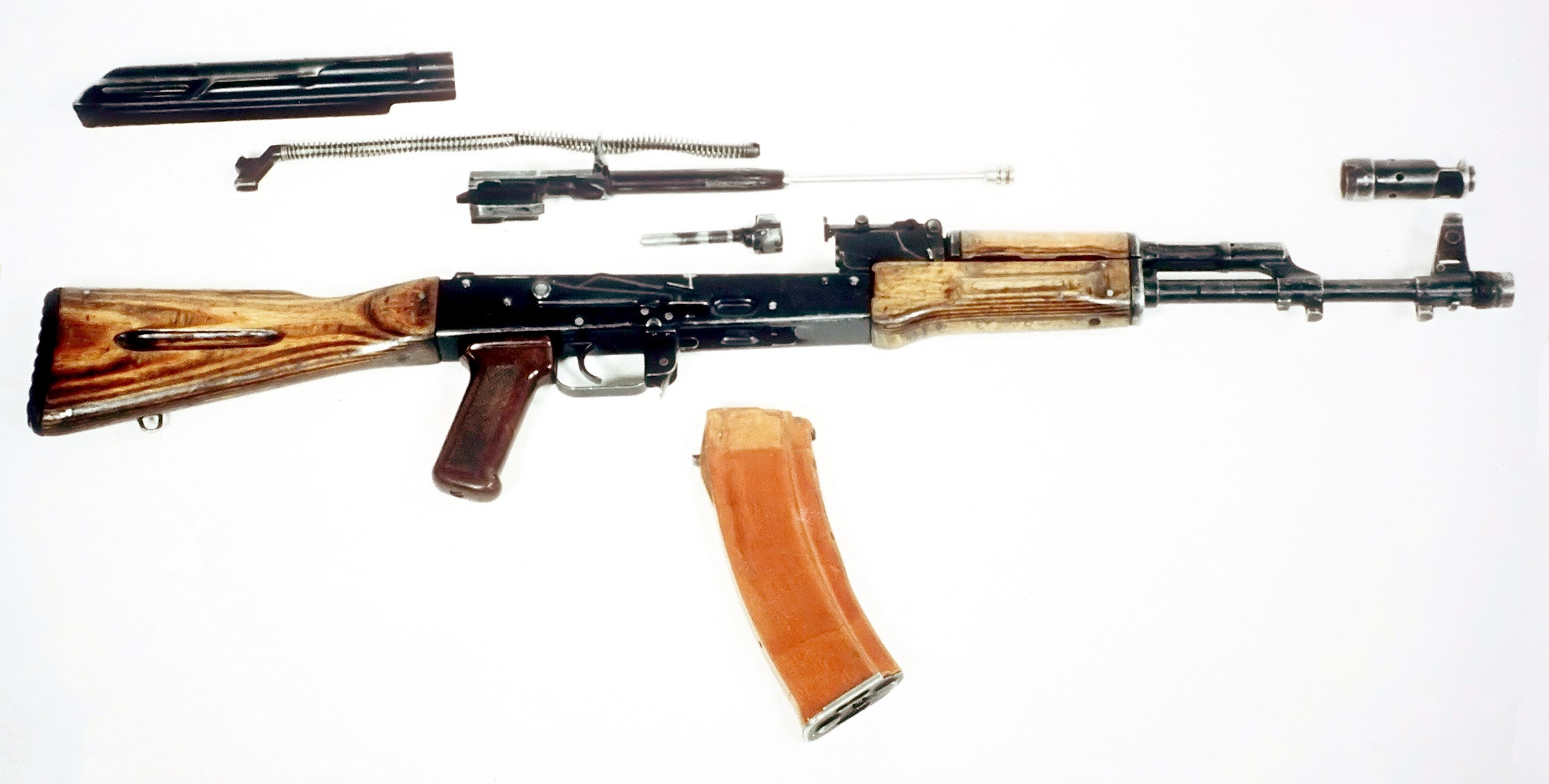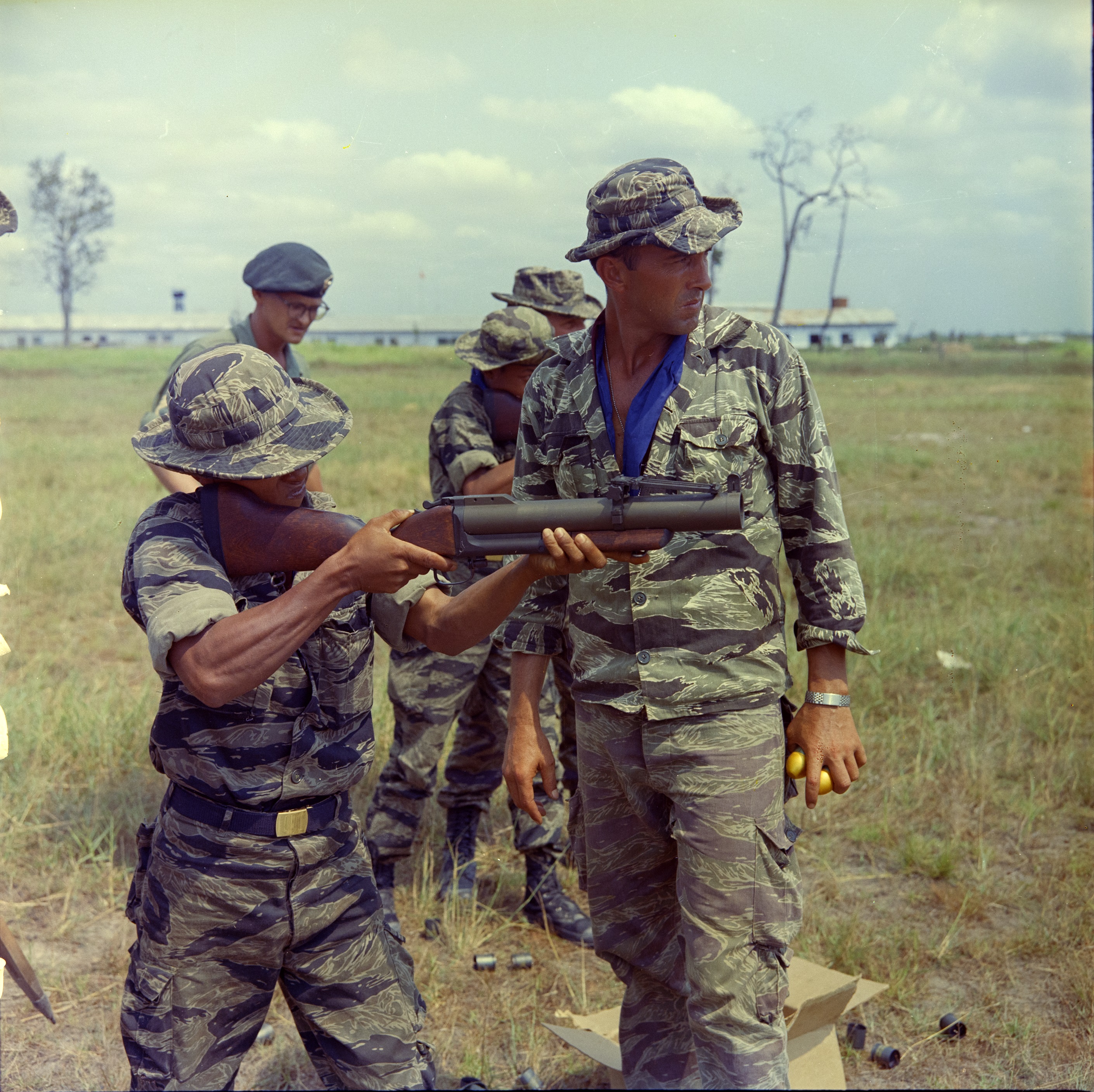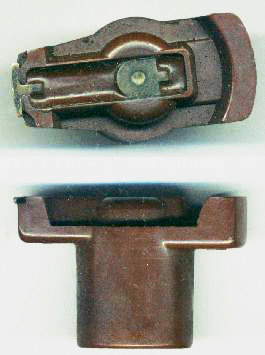|
Pușcă Automată Model 1986
The Pușcă Automată model 1986 (automatic rifle model 1986, abbreviated ''PA md. 86'' or simply ''md. 86'') is the standard assault rifle used by the Romanian Army, Romanian Military Forces. It is manufactured in Cugir, Romania by the ROMARM firm, located in Bucharest. The export name for this variant is the AIMS-74. History As the Soviet Union switched from the 7.62×39mm caliber AKM to the 5.45×39mm caliber AK-74, it encouraged other nations of the Warsaw Pact to follow suit. By the mid 1980s, Romania decided to switch calibers, but it was decided that the new rifle would be developed independently, and not represent a clone of the Soviet AK-74. In doing so, the PA md. 86 has several anachronistic AKM elements that were found only on the prototype Soviet AK-74. Features The most easily recognized AKM feature is the gas block design (45 degree versus 90 degree). Incidentally, although the gas block is purely AKM, the gas vent in the barrel did change to a 90-degree design t ... [...More Info...] [...Related Items...] OR: [Wikipedia] [Google] [Baidu] |
AK-74
The AK-74 ( Russian: , tr. ''Avtomat Kalashnikova obraztsa 1974 goda'', lit. 'Kalashnikov assault rifle model 1974') is an assault rifle designed by small arms designer Mikhail Kalashnikov in 1974 as a successor to the AKM. While primarily associated with the Soviet Union, it has been used by many countries since the 1970s. It is chambered for the 5.45×39mm cartridge, which replaced the 7.62×39mm cartridge of Kalashnikov's earlier automatic weapons for the Soviet Armed Forces. The rifle first saw service with Soviet forces in the Soviet–Afghan War from 1979. The head of the Afghan bureau of the Inter-Services Intelligence (ISI), the intelligence agency of Pakistan, claimed that the American Central Intelligence Agency (CIA) paid $5,000 for the first AK-74 captured by the Afghan mujahideen during the war. , most countries of the former Soviet Union use the rifle. Licensed copies were produced in Bulgaria (AK-74, AKS-74 and AKS-74U), and in the former East Germany ... [...More Info...] [...Related Items...] OR: [Wikipedia] [Google] [Baidu] |
Steel
Steel is an alloy of iron and carbon that demonstrates improved mechanical properties compared to the pure form of iron. Due to steel's high Young's modulus, elastic modulus, Yield (engineering), yield strength, Fracture, fracture strength and low raw material cost, steel is one of the most commonly manufactured materials in the world. Steel is used in structures (as concrete Rebar, reinforcing rods), in Bridge, bridges, infrastructure, Tool, tools, Ship, ships, Train, trains, Car, cars, Bicycle, bicycles, Machine, machines, Home appliance, electrical appliances, furniture, and Weapon, weapons. Iron is always the main element in steel, but other elements are used to produce various grades of steel demonstrating altered material, mechanical, and microstructural properties. Stainless steels, for example, typically contain 18% chromium and exhibit improved corrosion and Redox, oxidation resistance versus its carbon steel counterpart. Under atmospheric pressures, steels generally ... [...More Info...] [...Related Items...] OR: [Wikipedia] [Google] [Baidu] |
Rate Reducer
Rate or rates may refer to: Finance * Rate (company), an American residential mortgage company formerly known as Guaranteed Rate * Rates (tax), a type of taxation system in the United Kingdom used to fund local government * Exchange rate, rate at which one currency will be exchanged for another Mathematics and science * Rate (mathematics), a specific kind of ratio, in which two measurements are related to each other (often with respect to time) * Rate function, a function used to quantify the probabilities of a rare event * Reaction rate, in chemistry the speed at which reactants are converted into products Military * Naval rate, a junior enlisted member of a navy * Rating system of the Royal Navy, a former method of indicating a British warship's firepower People * Ed Rate (1899–1990), American football player * José Carlos Rates (1879–1945), General Secretary of the Portuguese Communist Party * Peter of Rates (died 60 AD), traditionally considered to be the first bish ... [...More Info...] [...Related Items...] OR: [Wikipedia] [Google] [Baidu] |
M16 Rifle
The M16 (officially Rifle, Caliber 5.56 mm, M16) is a family of assault rifles adapted from the ArmaLite AR-15 rifle for the United States Armed Forces, United States military. The original M16 was a 5.56×45mm NATO, 5.56×45mm automatic rifle with a 20-round magazine. In 1964, the XM16E1 entered US military service as the M16 and in the following year was deployed for jungle warfare operations during the Vietnam War. In 1969, the M16A1 replaced the M14 rifle to become the US military's standard service rifle. The M16A1 incorporated numerous modifications including a bolt-assist ("forward-assist"), chrome-plated bore, protective reinforcement around the magazine release, and revised flash hider. In 1983, the United States Marine Corps, US Marine Corps adopted the M16A2 rifle, and the United States Army, US Army adopted it in 1986. The M16A2 fires the improved 5.56×45mm (M855/SS109) cartridge and has a newer adjustable rear sight, case deflector, heavy barrel, improved ha ... [...More Info...] [...Related Items...] OR: [Wikipedia] [Google] [Baidu] |
FB Tantal
The ''karabinek wzór 1988'' (Carbine Model 1988) Tantal is a 5.45×39mm assault rifle designed and produced in Poland in the late 1980s. Development Design work on the new rifle officially began in 1984 at the government-owned ''Ośrodek Badawczo-Rozwojowy'' (OBR) in the city of Radom at the request of the Polish Ministry of Defense (the OBR institute had already been studying a possible 5.45mm weapon since late 1980). In 1985, the weapon’s parameters were confirmed and factory tests were conducted by the end of that year. In 1986 the first batch of prototypes was fabricated for evaluation and qualification testing. These early prototypes, initially designated wz. 1981, were modeled on the Soviet 7.62mm AKM assault rifle. As the weapon was intended to be able to launch rifle grenades, a newly designed, multi-functional muzzle device and a sturdier folding shoulder stock were used (the wire stock is a copy of the wire stock used on the East German MPi-KMS-72 rifle). Additi ... [...More Info...] [...Related Items...] OR: [Wikipedia] [Google] [Baidu] |
Grenade Launcher
A grenade launcher is a weapon that fires a specially designed, large caliber projectile, often with an explosive, Smoke screen, smoke, or tear gas, gas warhead. Today, the term generally refers to a class of dedicated firearms firing unitary grenade Cartridge (firearms), cartridges. The most common type are man-portable, shoulder-fired weapons issued to individuals, although larger crew-served launchers are issued at higher levels of organization by military forces. Grenade launchers are produced in the form of standalone weapons (either Single-shot, single shot or Repeating firearm, repeating) or as attachments mounted to a parent firearm, usually a rifle. Larger crew-served automatic grenade launchers such as the Mk 19 grenade launcher, Mk 19 are mounted on Weapon mount, tripods or vehicles. Some armored fighting vehicles also mount fixed arrays of short-range, single-shot grenade launchers as a means of defense. History Early precursors The earliest devices that could ... [...More Info...] [...Related Items...] OR: [Wikipedia] [Google] [Baidu] |
Bakelite
Bakelite ( ), formally , is a thermosetting polymer, thermosetting phenol formaldehyde resin, formed from a condensation reaction of phenol with formaldehyde. The first plastic made from synthetic components, it was developed by Belgian chemist Leo Baekeland in Yonkers, New York, in 1907, and patented on December 7, 1909. Bakelite was one of the first plastic-like materials to be introduced into the modern world and was popular because it could be Molding (process), molded and then hardened into any shape. Because of its electrical nonconductor, nonconductivity and heat-resistant properties, it became a great commercial success. It was used in electrical insulators, radio and telephone casings, and such diverse products as kitchenware, jewelry, pipe stems, children's toys, and firearms. The retro appeal of old Bakelite products has made them collectible. The creation of a synthetic plastic was revolutionary for the chemical industry, which at the time made most of its income f ... [...More Info...] [...Related Items...] OR: [Wikipedia] [Google] [Baidu] |
Laminated Wood
Simulated flight (using image stack created by μCT scanning) through the length of a knitting needle that consists of laminated wooden layers: the layers can be differentiated by the change of direction of the wood's vessels Shattered windshield lamination keeps shards in place Laminate flooring A flexible thin-film solar cell for aerospace use (2007) Lamination is the technique/process of manufacturing a material in multiple layers, so that the composite material achieves improved strength, stability, sound insulation, appearance, or other properties from the use of the differing materials, such as plastic. A laminate is a layered object or material assembled using heat, pressure, welding, or adhesives. Various coating machines, machine presses and calendering equipment are used. Lamination may be applied to textiles, glass, wood, or other materials. Laminating paper in plastic makes it sturdy, waterproof, and erasable. Laminating metals and electronic component ... [...More Info...] [...Related Items...] OR: [Wikipedia] [Google] [Baidu] |
Flash Suppressor
A flash suppressor, also known as a flash guard, flash eliminator, flash hider, or flash cone, is a device attached to the muzzle (firearms), muzzle of a rifle that reduces its Muzzle flash, visible signature while firing by cooling or dispersing the burning gases that exit the muzzle, a phenomenon typical of carbine-length weapons. Its primary intent is to reduce the chances that the shooter will be blinded in low-light shooting conditions. Contrary to popular belief, it is only a minor secondary benefit if a flash suppressor reduces the intensity of the flash visible to the enemy. A flash suppressor is different from a muzzle brake, although they are typically mounted in the same position and sometimes confused with each other. While the former is intended to reduce visible flash, a muzzle brake is designed to reduce recoil inherent to large cartridges and typically does not reduce visible flash. Rationale Pre-20th century rifle designs tended to have longer barrels than moder ... [...More Info...] [...Related Items...] OR: [Wikipedia] [Google] [Baidu] |




